Georg Wiese
Neural Question Answering at BioASQ 5B
Jun 26, 2017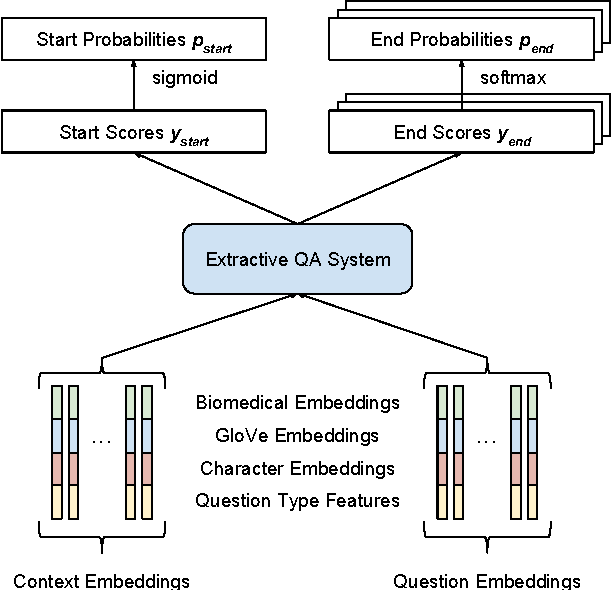
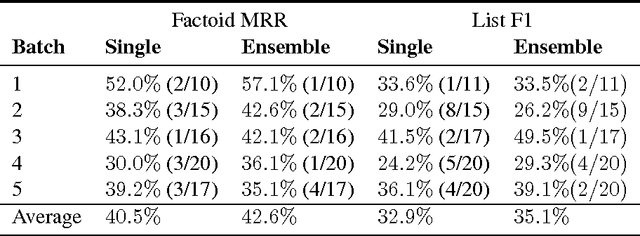
Abstract:This paper describes our submission to the 2017 BioASQ challenge. We participated in Task B, Phase B which is concerned with biomedical question answering (QA). We focus on factoid and list question, using an extractive QA model, that is, we restrict our system to output substrings of the provided text snippets. At the core of our system, we use FastQA, a state-of-the-art neural QA system. We extended it with biomedical word embeddings and changed its answer layer to be able to answer list questions in addition to factoid questions. We pre-trained the model on a large-scale open-domain QA dataset, SQuAD, and then fine-tuned the parameters on the BioASQ training set. With our approach, we achieve state-of-the-art results on factoid questions and competitive results on list questions.
Neural Domain Adaptation for Biomedical Question Answering
Jun 15, 2017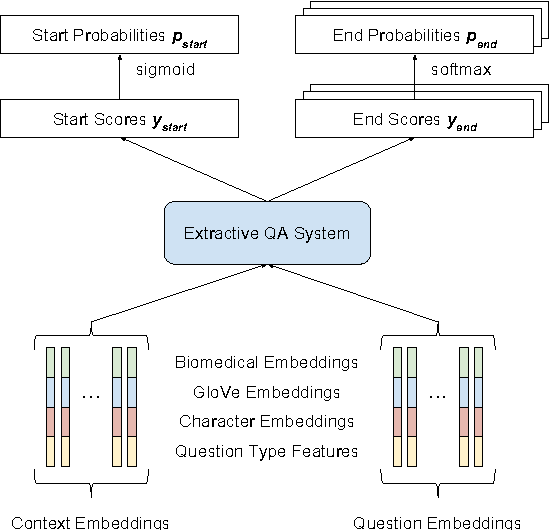
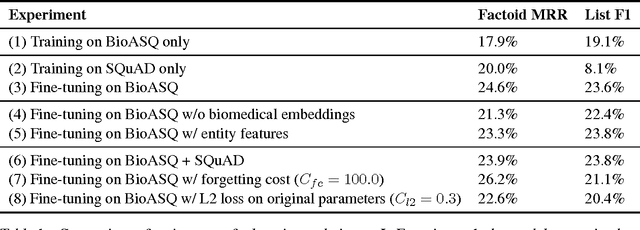
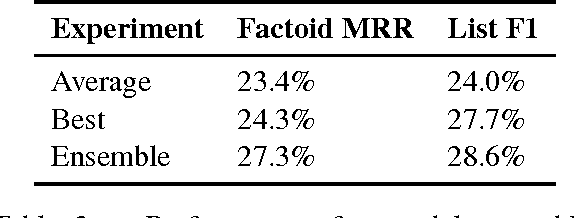

Abstract:Factoid question answering (QA) has recently benefited from the development of deep learning (DL) systems. Neural network models outperform traditional approaches in domains where large datasets exist, such as SQuAD (ca. 100,000 questions) for Wikipedia articles. However, these systems have not yet been applied to QA in more specific domains, such as biomedicine, because datasets are generally too small to train a DL system from scratch. For example, the BioASQ dataset for biomedical QA comprises less then 900 factoid (single answer) and list (multiple answers) QA instances. In this work, we adapt a neural QA system trained on a large open-domain dataset (SQuAD, source) to a biomedical dataset (BioASQ, target) by employing various transfer learning techniques. Our network architecture is based on a state-of-the-art QA system, extended with biomedical word embeddings and a novel mechanism to answer list questions. In contrast to existing biomedical QA systems, our system does not rely on domain-specific ontologies, parsers or entity taggers, which are expensive to create. Despite this fact, our systems achieve state-of-the-art results on factoid questions and competitive results on list questions.
Making Neural QA as Simple as Possible but not Simpler
Jun 08, 2017



Abstract:Recent development of large-scale question answering (QA) datasets triggered a substantial amount of research into end-to-end neural architectures for QA. Increasingly complex systems have been conceived without comparison to simpler neural baseline systems that would justify their complexity. In this work, we propose a simple heuristic that guides the development of neural baseline systems for the extractive QA task. We find that there are two ingredients necessary for building a high-performing neural QA system: first, the awareness of question words while processing the context and second, a composition function that goes beyond simple bag-of-words modeling, such as recurrent neural networks. Our results show that FastQA, a system that meets these two requirements, can achieve very competitive performance compared with existing models. We argue that this surprising finding puts results of previous systems and the complexity of recent QA datasets into perspective.
 Add to Chrome
Add to Chrome Add to Firefox
Add to Firefox Add to Edge
Add to Edge